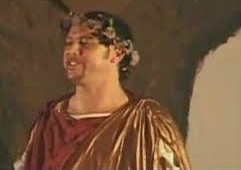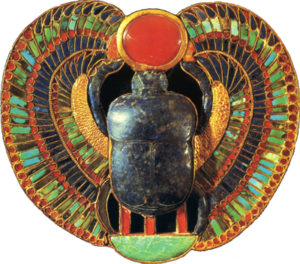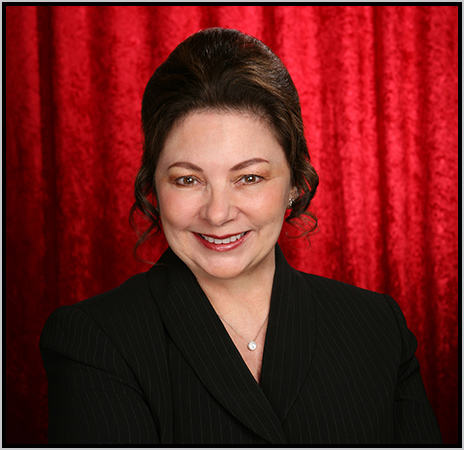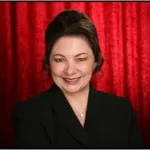
Part I
Aleister Crowley has written a great many wonderful works: poetry, erotica, magical and Thelemic essays, novels, treatises on yoga and meditation, translations of foreign writers, volumes of instructional works, even a rhapsody; he also has written a couple of plays. One play in particular, The Ship, was written sometime between 1909 and 1913, but was only published within the Equinox, volume I, #10. It was never produced while Crowley was alive, but remained like many of his writings, available to be read and pondered over. It wasn’t until nearly 100 years later that The Ship found its way to a stage and an audience. At the Ordo Templi Orientis’ third National conference, held in Long Beach California, on August 11th, 2001, this mystery play was finally produced on stage.
 Frater Kallah Adonai also known as Thelemite Chris Parker, dreamed of the day when he might be able to produce this unusual two-scene production. Since the National conference was to be hosted by the Southern California Thelemic community, the opportunity sprang to the fore. Kallah Adonai’s mind raced with visual interpretations for each scene, possible costume constructions and ways of making what Crowley, the creative genius, meant by his stage directions and how to make them become realized in an acceptable and presentable manner. Crowley with a definitive flair for the dramatic, and having not had the play produced, was unaware of the difficulties that might be presented. Undaunted by these difficulties, a cast was drawn together, a costume designer asked to work a creative interpretation, a stage designer pushed to create a stage with no proscenium arch, a lighting director to create mood with no lighting rail or footlights, and a music master to create every sound from the opening to the closing. A colossal task, for the sake of only one or two performances, at most.
Frater Kallah Adonai also known as Thelemite Chris Parker, dreamed of the day when he might be able to produce this unusual two-scene production. Since the National conference was to be hosted by the Southern California Thelemic community, the opportunity sprang to the fore. Kallah Adonai’s mind raced with visual interpretations for each scene, possible costume constructions and ways of making what Crowley, the creative genius, meant by his stage directions and how to make them become realized in an acceptable and presentable manner. Crowley with a definitive flair for the dramatic, and having not had the play produced, was unaware of the difficulties that might be presented. Undaunted by these difficulties, a cast was drawn together, a costume designer asked to work a creative interpretation, a stage designer pushed to create a stage with no proscenium arch, a lighting director to create mood with no lighting rail or footlights, and a music master to create every sound from the opening to the closing. A colossal task, for the sake of only one or two performances, at most.
In a cursory reading of the script one may be left wondering at what is meant by the entire exercise. It seems more than a simple death and rebirth story. It is called The Ship, but a ship is never seen. The set is described more like a Tarot card than any every day setting. The characters seem to be randomly selected (an Arab, a Chinaman and a Zulu) and lazily named (Julie and Julian, Joanna and Jovian). The characters ask questions as often as they reply with exclamations. It seems to be presented as a modern mystery, yet has an ancient Greek feel with a chorus resounding asides and glorious adulations. Yet the play does leave one with a sense of ritual inspiration, via a divine device with a soulful recount. The language is poetically spoken in rhyming circles, yet it reveals a truth that is ever present and unending.
Since this was the first time that the play had been produced, this writer was curious to know what kind of insight each actor had received by embodying each character, and their insights on the production in general. A greater insight and understanding was needed for a production so paradoxical. To assist with this overall interpretation each of the actors was asked a series of questions. How did it feel to play their part? Did playing their part strike any particular note on a personal basis? Did their character represent in their mind any possible analogy magically or psychologically? Did their character reveal a particular truth or key aspect within the play? What were some of their overall interpretations of the production as a whole? It was discovered that multiple levels of symbolism were to be found depending upon the observer’s and participant’s magical experience and level of Thelemic initiation. Often only by examining the parts, can one discover the meaning of the whole; and only by succeeding magical experience can one understand the depth of each singular action.
Who is John the High Priest and what does he represent? Chris Parker, who played the lead as well as directed and produced the play, lent us his insight. John is “the aged kingship, with upright power, yet weary.” It’s about “his willing yet still tragic surrender to the forces of dissolution, Zagreus dismembered, the body broken, the host fractured that a particle might be extracted, a seed planted, then Life at last. The Light extended, Life reborn, the Deed Divine. John is “our Lord in ourselves, whose name is Mystery of Mystery. Solve et coagula; the Angel and a hint of the Abyss to come. The life of every man and woman; birth, death and rebirth; creation, their dissolution and their identity. The First Matter and the gold therein; descent into darkness per adventure to find the Light. Pouring the Sun into the Moon. Iacchos!”
When one reads the list of the play’s characters, it becomes obvious that something special is meant by naming the two women and the two wardens names that all begin with the letter “J”. Soror Lilavati, who played Julia, had this explanation: “The four J’s are actually part of John. They represent the manifestation of John’s consciousness into the world of matter, through the four worlds of Tetragrammaton. Without the four J’s, the ‘Shin’ of John and the formula of IAO they are just abstract ideas. The actions of the four J’s bring the Shin into all four worlds simultaneously, including Assiah”. Sarah Sabolek, who played Joanna reminds us that “each character in the play represents an aspect of our psychological makeup.” Chris Parker clarified it even more by saying, “The priest, the shrine, the God, the Rite of Creation, these are always present in the life of every person. The process cycles continuously whether we are conscious of it or not.”
Who are Julia and Joanna and whom do they represent? Again Soror Lilavati answers for Julia. Julia is “Isis in mourning, or Isis as the mature Queen of Magick, wife, and mother; the second ‘heh’ in tetragrammaton; any of the Queens of the Tarot; and the Empress. I was overcome with an aspect of Isis, but it was not until after the Rose Dance that the full impact hit me. When I said “Alas, no life reposes,” real tears filled my eyes, and I was overcome with grief and sorrow in that moment. That moment opened a door for me into the Mysteries of Julia… Her joy in union with the Priest, the dark night of her loss, her hope for the dawn and fear that it would not come, her rapture in the rebirth of the young Priest who is both her son and her husband, the knowing that she must ‘dare the dark again.’ Essentially, it is a particular window into the formula of IAO.”
Sarah Sabolek gives us a closer look at her character. “Joanna plays the innocent, the virgin; aspects of her are Persephone-like. She embodies a pureness, a sacredness within the shrine, and during the production, she goes through the passage of girlhood into adulthood. She is strong because she is pure. She is brave because she is innocent, and innocence can be a great strength. Joanna offers corn to John, as it represents the body and the work of being. The offer of wine by Julia is the blood of life.” Joanna cannot offer that as she has yet to know the mysteries of the blood.
When asked what she thought about the play, Sarah continued. “The play portrays the story of rebirth. Immortality is locked into mortality, which guarantees that the continuance of life is insured by its very demise. Crowley managed to fit so many stories into one play. He managed to fit a crucifixion in with the story of Noah’s Ark, and reincarnation with the basic changing of the seasons. Experiencing the role brought all those great truths to a focused reality inside of me. Performing made it a part of my body. I mean there is a spectrum of existence out there to experience, but then to share it with so many magicians sitting in the audience brought on a wave of that realization even more powerfully.”
Anthony Torchia played one of the wardens of the temple of the Sun, Jovian. “Playing Jovian seemed to suit who I am at this point in my life. The insight I have is that even though Jovian failed to protect John, the resurrection would not have been possible without this failure. So in reality he played his role exactly as needed to fulfill the formula, and to label it a failure is to miss the point. Each time John was resurrected in our rehearsals, and particularly at the two performances [a previous performance was given a month earlier at a local bookstore], I felt the universe saying to me as forcefully as it could that THIS is the universal theme, and this formula is available to be used every day of your life. The Sufis say that Allah recreates himself every moment, and now I begin to understand this and realize its incredible value. The past is DEAD. Let yourself be reborn into the youthful, enthusiastic star that you truly are.”
Frater Seraphino played the other warden Julian. “Basically, the warders struck me as being akin to the children of the Mass, both magically and in terms of stage presence. I don’t think Crowley wrote this play to be performed. Instead, I think he wrote this play in order to tick off the Masons by alluding to the various secrets of Masonry up to the highest of their degrees. I suspect that he had the warders fill many different bit characters in the Masonic stories (the grave diggers, the people hunting the assassins, the guards of the temple) that they sort of became the generic ‘Swiss army knife’ of the bit players on stage.”
Soror Lilavati instinctively viewing the tableau of the wardens on stage added that, Jovian and Julian in white and black [respectively], uphold John much as the black and white pillars of Joachin and Boaz uphold the Temple. John is able to manifest because he is upheld by the two opposites.
The three Assassins perhaps bring on the most inconspicuous and complex interpretations the play has to offer. Soror Lilavati and Kallah Adonai offered these analogies: the three gunas of Sattva, Rajas, Tamas; the three assassins in the Rite of Sol of Satan-Typhon, Scorpio-Apophis and Besz; the three characters on the rim of the wheel in the Rite of Jupiter of Typhon, Hermanubis and the Sphinx; and also alchemically with the substances of mercury, sulfur and salt. All of which possess the magical formula for transmutation.
Tess Moon played a voice in the chorus as well as one of the three assassins, the Arab. “Being the Arab Assassin wearing red, my costume was like the magician’s natural garment except the white undergarment was replaced with a black one (an impure being, combined with the red becoming Self-Will.) The color red may also refer to Jupiter’s red spot, aka the Eye of Horus. It has also been visualized as the mouth from where the original ‘Word’ of creation was uttered.”
Tess then makes a pertinent analogy of the three assassins, of Julia and Joanna and of John directly to the Sephiroth. “The sun [John/Tiphareth] requires proper tempering by the energies of Venus/Netzach [Soror Lilavati in green] and Jupiter/Chesed [Sarah in blue]. The assassins represent Mercury/Hod [Dr. Bright in yellow/ orange], Mars/Geburah (me in red) and Saturn/Binah [Rick in black]. The order of the assassins Hod-Geburah-Binah was reflected within their dialog and action, as in the tarot paths linking each to the sun god. Hod uses weapons that bind and scourge as in the Devil card. Geburah passes judgment through the nails corresponding to fate, and Binah is the one who ultimately sacrifices the innocent sun god. It is very much the energies of the left pillar alternating with the right pillar that create the cycle of the sun.
Tess lends a further insight; “also as humans, we encompass each of the archetypal energies represented by the Sephirah. Ultimately, we are to become our Higher Self represented by Tiphareth. The important thing is, that energy does not remain static. As we move through the paths back and forth through the Sephiroth, we often experience these as projected conflicts with others, which requires change, compromise and new understanding. These changes always bring us back to Binah, by integrating the new information in a way that [causes] future responses to be changed and becomes Wisdom. In the process, our Higher Self is ‘destroyed’ and goes through a process of Self-transformation we often save for our Regular Selves. It is then up to our Regular Self to continue working with the Devotional/Mystical Sephirah in order to bring our Higher Self ‘back to Life’ or ‘back into our Being,’ so to speak, since only through our Higher Self can we perceive (if only indirectly) the Divine Truth.”
Dr. Robert C. Bright played a voice in the chorus as well as the second of the three assassins, the Chinaman. “As the Chinaman I did think about the Chinese [or Oriental perspective] and what that might mean, but I didn’t have that deep of a connection to it on that level. The racial aspect was de-emphasized and the alchemical aspect emphasized. How did it feel to play this part ? A little scary because I must ‘kill and be killed,’ and I felt some sense of injustice because I did not kill the priest, I just gave him a whipping, and maybe I could have had a lighter sentence with better counsel. Their [the assassins] means of death related to the chakras, too. What also impressed me was the fact that the three assassins wanted the secret so bad that they were willing to risk death to get it, which is exactly what they would need to do. Also the yearning for the light part, and the blinding blazing forth from the desecrated temple, particularly struck a recent familiar experience.”
Rick Gorton also played one of the voices of the chorus, the third assassin — perhaps the cruelest, the Zulu. “For myself, I attempted to bring a surrealism to my role as the Zulu. I had to portray a sense of sarcastic evil; the epitome of being a Black Brother attempting to lure my way into the temple with my associates. When guile did not achieve my aim, force was attempted, then murder. During the period after the assassination, I tried to give an impression of desperation, as the three of us assassins realize our eventual fate. Historically, I drew an analogy to Brutus, and the assassination of Caesar.”
The Chorus was made up of six people. The three actors who played the assassins helped to fulfill three of these voices and the remainder played by Soror Pelagia Phosteres or sister Cynthea Wilkes, sister Angela Wixtrom, and Frater SivAnanda Samsara completed the chorus. Dr. Bright thought maybe they portrayed uninitiated humans.
Cynthea Wilkes played a voice in the chorus and the voice in the west. “Being the voice of the west, it was associated with the flood waters. The atrocities of the assassins were the catalyst for the flood waters to rise. As far as the rest of the play, I feel the entire Man of Earth triad is represented in the character of John, as if he were the Everyman initiate. The assassins represent the challenges to doing your True Will. The four seasons are represented by Julia (Spring), Joanna (Summer), Jovian (Autumn) and Julian (Winter), to work together to bring John through his natural cycle. In other words, Hye Kye. Let it flow, let it conceive.”
Angela Wixtrom also played a voice in the chorus. The chorus acted as a witness to the work. It can be thought of as mankind becoming manifest. At times dropping the mask and being true men and women. The Ship is about the incarnation of man, of consciousness being born from that; the slaying of Osiris, through the dark side of the moon.
 Fr. SivAnanda Samsara played a voice in the chorus and the Keph-Ra Beetle. “Working as the Keph-Ra Beetle was for me much more of a richer spiritual experience than the chorus (which was more of an academic and historic exercise). One of the techniques that I used was to modify Crowley’s Liber Resh adoration from the second person to the first person, in order to gain the proper focus, Kephra in my hiding and also unto me who art Kephra in my silence. After I had gotten over the excitement-rush of being the sacred beetle for the play, I began to realize that I had personally neglected the understanding of the God Keph-Ra. My entire extent into the symbolism had been smashing Kephra beetles in order to hear them “POP” when I was traveling on my “Hajj” to Cefalu. I began to explore the various naturalistic attributes behind the concept of the force of life being contained in the shit/manure [which this animal rolls its eggs in to incubate them], but I had not yet completely connected with the spiritual aspect of this fact of Nature.
Fr. SivAnanda Samsara played a voice in the chorus and the Keph-Ra Beetle. “Working as the Keph-Ra Beetle was for me much more of a richer spiritual experience than the chorus (which was more of an academic and historic exercise). One of the techniques that I used was to modify Crowley’s Liber Resh adoration from the second person to the first person, in order to gain the proper focus, Kephra in my hiding and also unto me who art Kephra in my silence. After I had gotten over the excitement-rush of being the sacred beetle for the play, I began to realize that I had personally neglected the understanding of the God Keph-Ra. My entire extent into the symbolism had been smashing Kephra beetles in order to hear them “POP” when I was traveling on my “Hajj” to Cefalu. I began to explore the various naturalistic attributes behind the concept of the force of life being contained in the shit/manure [which this animal rolls its eggs in to incubate them], but I had not yet completely connected with the spiritual aspect of this fact of Nature.
It was also noteworthy to me to keep in mind the formula of V.I.T.R.I.O.L. — Visita Interior Terrae Rectificando Iuvenies Occultum Lapidum, as an alchemical quest; utilizing also Jungian depth-psychological methods of delving completely into the complexes and insanities of your own psyche in order to find growth and strength from the resolution (rectificando) of subconscious stress-points and issues/baggage. When I had piped the results of this analysis into the Yogic techniques of Pratyahara->Dharana->Dhyana-> Samadhi->NirvikalpaSamapati I was able to DEEPLY jostle loose any complexes. Jung called it the “Misverhaeltnis” or literally wrongly-completely-state-of-holding or something being held in a false relationship or proportion with something else; especially in terms of complexes/interpretations in the psyche unconscious. This is what had led me to avoid the contemplation of the Keph-Ra mysteries in the first place. As Crowley once stated it, and I paraphrase: ‘Subdue thy fear and thy disgust of ALL THINGS soever, then behold! Who art when all but thou ART GONE thou centre and secret of the sun?’ ”
“Crowley says somewhere that the play The Ship contains all of the true secrets of Blue Lodge Masonry, i.e 1st through 3rd degree regular Craft masonry. The body of the slain priest-king John being carried and held within a “grown-new” ship to be set adrift into the “sea that hath no shores” was a masterful marriage of the Ashurbanipul-Ziggurat/SchneeWitchen(Snow White) — Crypt/Noah-Ark myth with the Krishna/Dionysus/Bacchus/Christ life and subsequent death events. Their obvious initiated interpretations cannot be here stated except that any O.T.O. initiate of the Man of Earth degrees should recognize some similarities (more in some degrees than in others) with the radical analysis. The character of the Beetle, to me, was rather a synthesis of the entire myth cycle contained within the seed of the God-form. My explorations made me realize and appreciate the beauty of the symbol of the Hawk-winged Beetle carrying the ultimate spark of the intimate fire sleeping within a shell of utter putrefaction carrying it across the Abyss to a convenient place for its rebirth.”
Read on for Part II
 The official website of Lita-Luise Chappell, writer on sex, magic, food, distant lands, and everyday life with articles, poetry, novels, travelogues, rituals, cookbooks, and short-stories.
The official website of Lita-Luise Chappell, writer on sex, magic, food, distant lands, and everyday life with articles, poetry, novels, travelogues, rituals, cookbooks, and short-stories.
